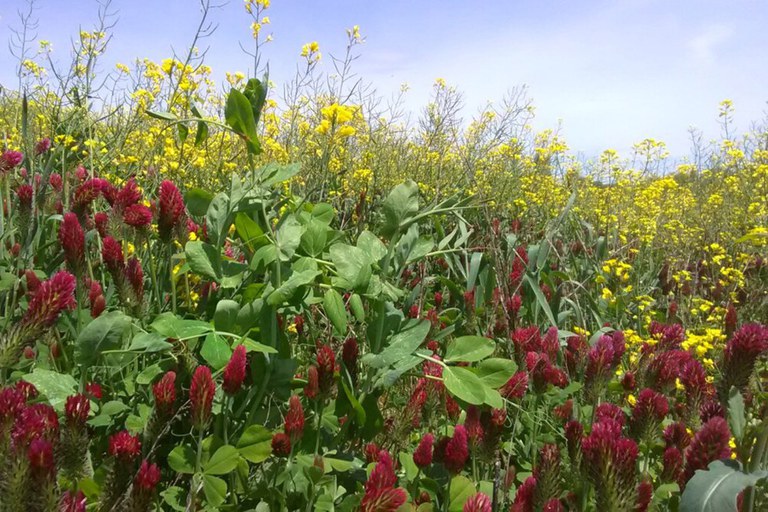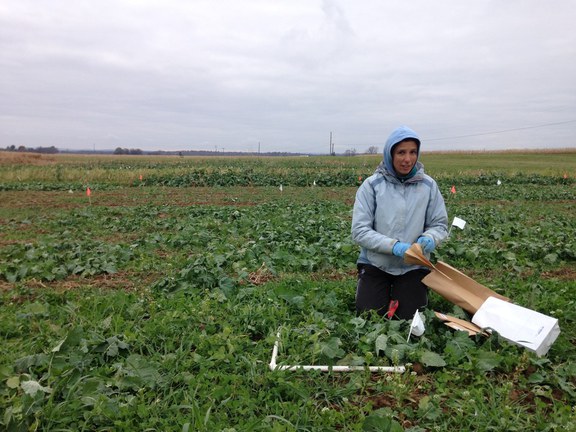"Farm tuning" cover crops for soil and climatic conditions can improve plant, soil health.—
Problem
Why do cover crop mixes produce profoundly different results depending on when and where they are planted?
- Cover crop mixtures comprised of multiple species planted in rotation between cash crops provide a suite of benefits—such as erosion reduction, weed control, addition of carbon and nitrogen to the soil, and support of beneficial organisms.
Findings
Researchers worked with eight participating farmers to compare a standard five-species cover crop mix to a "farm-tuned" mixture of the same species with seeding rates adjusted to achieve farmer-desired services.
- They found that growing degree days and nitrogen affected how the mixtures grew, countering a prevailing assumption that seeding rates had the biggest impact on ecosystem services.
- Their results showed that when soil inorganic nitrogen availability is high at the time of cover crop planting, highly competitive species can dominate mixtures, which could potentially decrease services provided by other species, especially legumes.
Impact
The knowledge gained from this study—novel due to its breadth and complexity—will be used to design custom seed mixes with predictable growth from the different species.
- Recommendations from the study can help farmers choose cover crop species and seeding rates according to their inorganic nitrogen in soil and planting dates to ensure the provision of desired ecosystem services.
Research Credit
Team
- Barbara Baraibar, Ebony Murrell, Brosi Bradley, Mary Barbercheck, David Mortensen, Jason Kaye, Charles White
Participating Departments
Partners
- Penn State Russell E. Larson Agricultural Research Center
- Eight organic commercial dairy farmers in Pennsylvania and New York
Competitive Funding
- USDA NIFA (OREI)
- Organic Farming Research Foundation
- USDA NIFA (Organic Transitions)
- College of Agricultural Sciences (Strategic Networks and Initiatives Program)
Federal and State Appropriations
- USDA NIFA Hatch Projects PEN04571, PEN04606, and PEN04600, Accession #1003346, # 1009990, and #1009362
Emerging Discoveries
Published Research
Cover crop mixture expression is influenced by nitrogen availability and growing degree days
-
Baraibar B, Murrell EG, Bradley BA, Barbercheck ME, Mortensen DA, Kaye JP, et al. (2020) Cover crop mixture expression is influenced by nitrogen availability and growing degree days. PLoS ONE 15(7): e0235868. https://doi.org/10.1371/journal.pone.0235868
Office for Research and Graduate Education
Address
217 Agricultural Administration BuildingUniversity Park, PA 16802-2600
- Email agresearch@psu.edu
- Office 814-865-3136
Office for Research and Graduate Education
Address
217 Agricultural Administration BuildingUniversity Park, PA 16802-2600
- Email agresearch@psu.edu
- Office 814-865-3136



